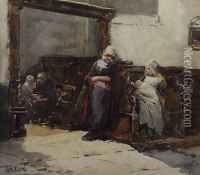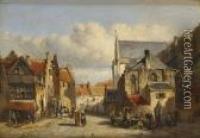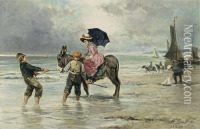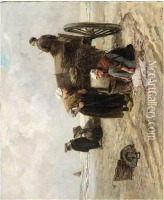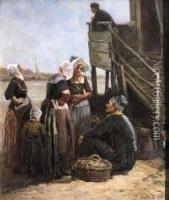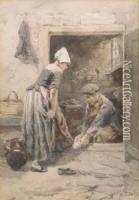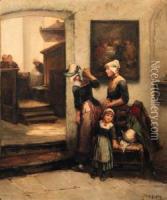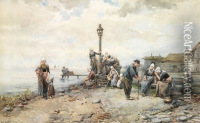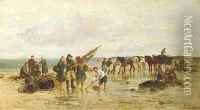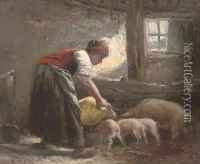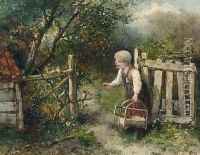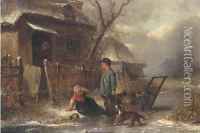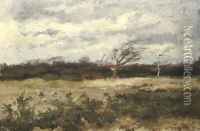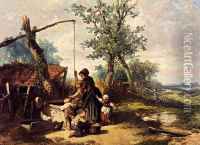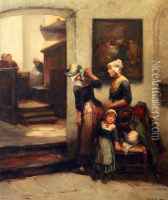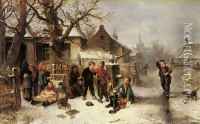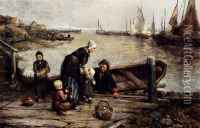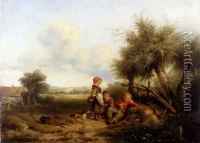Johan Mari Ten Kate Paintings
Johan Mari Henri Ten Kate, born on December 16, 1831, in The Hague, Netherlands, was a 19th-century Dutch painter and a member of the Ten Kate family of artists. He was known for his genre paintings and watercolors which often depicted charming scenes of children, festivities, and everyday life in rural Netherlands. His work is characterized by a fine attention to detail and a warm, vivid portrayal of the Dutch countryside and its inhabitants.
Growing up in an artistic family, Ten Kate was encouraged to pursue his talents from a young age. He was one of the many children of the painter Herman Frederik Carel Ten Kate and the brother of the artist Mari Ten Kate. He studied under his father and also attended the Royal Academy of Art in The Hague, where he was influenced by the Hague School of painting, which focused on realism and the effects of light.
Though Johan Mari Ten Kate's style was akin to the Hague School, he also was influenced by the earlier Dutch masters, integrating the fine detail and domestic subjects typical of the 17th-century Dutch genre paintings. Throughout his career, he exhibited his works widely in the Netherlands and also gained recognition abroad. His paintings were appreciated for their narrative quality and their ability to capture the simple pleasures of Dutch life.
In addition to genre scenes, Ten Kate also painted historical works and was known to have a fascination with the Dutch Golden Age, often reflecting this interest in his paintings through the clothing and settings of that period. His ability to evoke nostalgia and sentimentality made his paintings particularly popular among the bourgeois collectors of the time.
Johan Mari Ten Kate's artistic legacy continued through the generations, with his descendants also pursuing artistic careers. He passed away on February 26, 1910, in The Hague. Today, his works can be found in various Dutch museums and continue to be admired for their charm and historical value. His contributions to Dutch art are remembered as a vibrant depiction of 19th-century life in the Netherlands.
